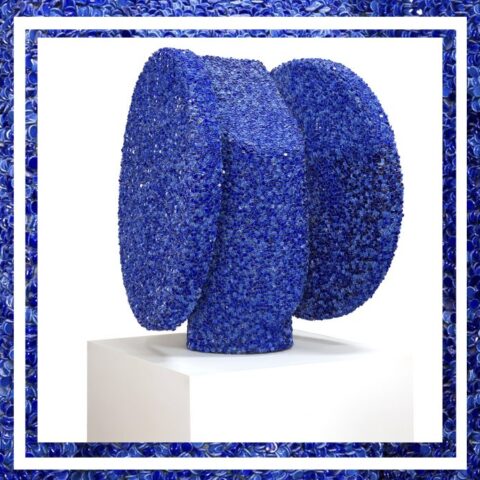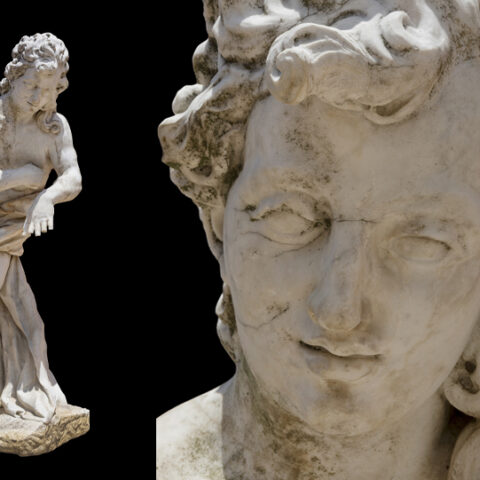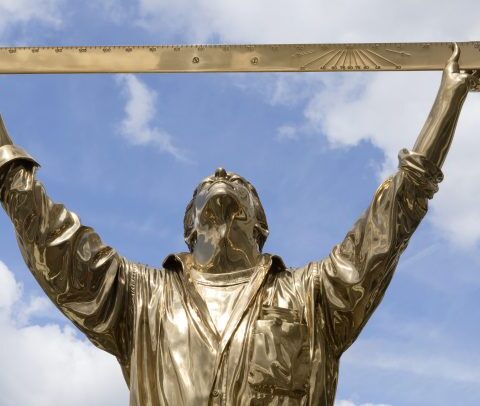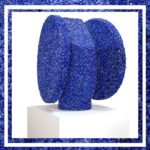With the artistic avant-gardes, art underwent a true revolution that meant the complete modernization of the traditional sculptural language. At the national level, this renovation is engraved with the name of Jorge Oteiza.
Jorge Oteiza’s sculpture and thought find their origin and roots in the deepest and most primitive identity and culture of his native land. In fact, his work cannot be understood in all its complexity without taking into account his relationship with the Basque Country and the delicate historical context in which it developed. After a few years dominated by a kind of cultural lethargy, Euskadi urgently needed to find a revulsive that would bring back the splendor of past times. Such a long-awaited reaction came in the second half of the 20th century with the confluence of a group of artists who came together in various movements such as GAUR, EMEN ORAIN and DANOK.
However, the definitive impulse that raised the Basque artistic practice to the top came from the hands of two names of their own: Oteiza and Chillida, who with their innovations would mark a turning point in the history of Basque art that went beyond our borders and echoed around the world.
In 1948 and after 15 years of frenetic experimentation that led him to travel around South America, Oteiza returned to his homeland imbued by avant-garde movements such as cubism, constructivism and Kazimir Malevich suprematism, but also by a deep knowledge of the megalithic statuary of Amerindian cultures. However, his return did not turn out to be as he had imagined. The panorama he found was clearly bleak; there was nothing left of the cultural impetus that had flourished during the Republic.
From his return until the end of the fifties, Jorge Oteiza’s presence in Spanish art and in the main international centers became permanent, and he became a key figure in the artistic events that took place. All his energy and strong conviction was channeled towards a renewal of Basque art, based on the affirmation of its identity as a people. With Oteiza, therefore, art once again played an essential role in society as a reflection, in this case, of Basque sensibility.
During these years, Oteiza fought tirelessly and vehemently to unite and revitalize the decayed Basque artistic world, but he came up against the indifference of the institutions, both those of Franco’s regime and those of Basque nationalism in hiding. His exhaustion in the face of the situation led him in 1959 to radically abandon sculpture, just when his career was at its peak, after winning the First Prize for Sculpture at the Sao Paulo Biennial (1957).
Fortunately, Oteiza’s decision was not definitive and in 1970 he resumed his sculptural activity, resuming and concluding old projects that he had left unfinished after his sudden retirement. It was then that he decided to devote himself to his chalk laboratory, the origin of which is to be found in the plaster models he used as the basis for his sculptures. In it, Oteiza gave free rein to all his theoretical approaches until he managed to scrutinize that interior space of the sculpture that the artist defined as the sacred space, linked to the prehistoric Basque culture and its megalithic monuments.
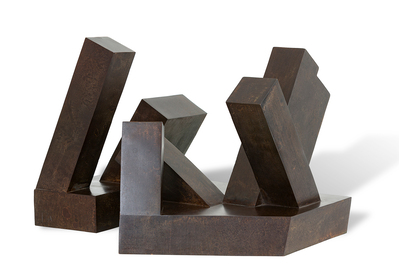
It was at this stage when, guided by the ambition to build space, not only from an architectural presence but also from a metaphysical and spiritual dimension, Oteiza decided to use two fundamental tools: boxes to contain the void and chalk to expand and release it in open dynamic forms. To the latter belong the two exceptional sculptures in question, whose bidding represents a significant event in the art market.
As a result of these experiments carried out in his chalk laboratory, Oteiza devised “Zazpiak” in 1970, whose casting under his personal supervision would not take place until 2001. Empty of matter and flooded with metaphysics, the work alludes in its forms and in its very title to the seven Basque territories that for the nationalists make up Esukal Herria and whose coats of arms are reproduced on the flag under a centuries-old slogan: Zazpiak bat (The seven, one). The piece reflects the tension between each of the parts and the whole, resulting in a strong, harmonious and expansive piece.
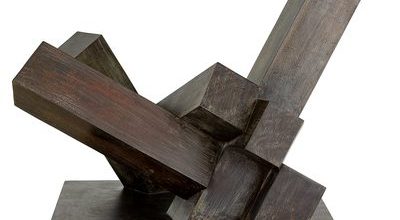
The chalk laboratory will also be where Oteiza takes up again the models entitled “Hau madrilentzat” (This for Madrid) linked to a failed public sculpture project for the Paseo de la Castellana in Madrid and initially conceived, as stated in the text written by Oteiza himself “My last sculpture in praise of discontent” to be installed at the end of the promenade, on the Monpas (San Sebastian) overhang.
Few titles so clearly anticipate the intention implicit in the creation and character of the artist. Symbolizing the tensions between the center and the periphery of the Spanish State, the figure composed of different tetrahedrons that diverge from each other, resembles a cut of sleeves and, paraphrasing the sculptor, symbolizes what he feels as “Euskadi’s visual response to the centralism of the deaf-blind politicians in Madrid”.
The passage of time as an element that Oteiza wanted to get rid of in his sculptures to elevate them to an eternal plane, now becomes the great ally of his legacy, whose validity is the best portrait of this artist who embodied with his art the true transforming and transcendental power of the aesthetic experience.




